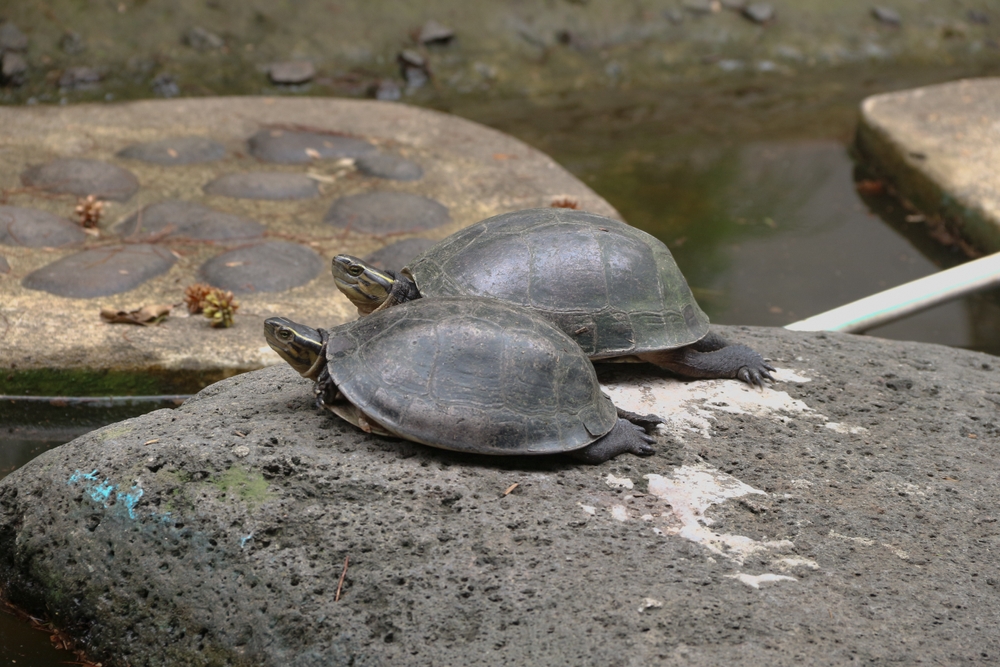Asian Box Turtles, renowned for their distinctive, colorful shells and intriguing behaviors, are a fascinating subject in the realm of herpetology. Native to various regions across Asia, these turtles are adapted to a range of habitats, from dense tropical forests to open grasslands. Their life in the wild is marked by a series of remarkable adaptations and survival strategies that allow them to navigate the challenges of their environment. However, despite their impressive survival skills, they face significant threats that necessitate focused conservation efforts.
Adaptations and Survival Strategies
Asian Box Turtles are equipped with several adaptations that enhance their chances of survival in the wild. These adaptations are crucial for their daily activities, from foraging to evading predators.
Addressing these challenges requires comprehensive conservation efforts. Asian box turtle conservation programs are essential for protecting these turtles and their habitats. These initiatives focus on several key areas:
- Protective Shell: One of the most notable features of Asian Box Turtles is their domed, hinged shells. The shell provides critical protection against predators. The ability to retract into their shell and close the hinged part creates a nearly impenetrable barrier, which is essential for defense. The shell’s coloration also helps with camouflage, blending in with the surrounding leaf litter and soil.
- Versatile Diet: These turtles are omnivorous, with a diet that includes plants, insects, and small invertebrates. This dietary flexibility allows them to adapt to varying food availability in their habitats. They are known to consume fruits, seeds, and even small vertebrates when the opportunity arises. This omnivorous diet is a key survival trait, enabling them to thrive in diverse environments where food resources may fluctuate.
- Burrowing Behavior: Asian Box Turtles have adapted to their environments by developing burrowing habits. They dig into the soil or leaf litter to find shelter, regulate their body temperature, and avoid extreme weather conditions. Burrowing also provides protection from predators and a safe space for resting or hibernation.
- Hydration Strategies: In their natural habitats, maintaining hydration is crucial. These turtles often seek out moist areas and may absorb water through their cloaca. They are also known to consume water-rich plants and use their environment to stay hydrated, which is vital for their overall health and survival.
Challenges and Threats
Despite their effective adaptations, Asian Box Turtles face several significant threats in the wild. These challenges are primarily driven by human activities and environmental changes.
- Habitat Destruction: The rapid expansion of agriculture, urbanization, and deforestation poses a severe threat to Asian Box Turtles. As their natural habitats are destroyed or fragmented, these turtles lose access to essential resources such as food, shelter, and breeding sites. The loss of habitat also isolates populations, making it difficult for them to find mates and maintain genetic diversity.
- Illegal Wildlife Trade: Asian Box Turtles are frequently targeted by the illegal wildlife trade, which has a profound impact on their populations. They are captured for the pet trade, traditional medicine, and culinary use. This illegal trade not only reduces wild populations but also disrupts their ecological roles and contributes to population declines.
- Climate Change: Climate change presents a range of challenges, including altered weather patterns, temperature fluctuations, and habitat loss. Changes in temperature can affect the turtles’ reproductive cycles and food availability. Additionally, extreme weather events such as floods or droughts can impact their survival rates and habitat stability.
- Pollution: Pollution, including water contamination and littering, affects the health of Asian Box Turtles. Pollutants can contaminate their food and water sources, leading to health issues and reduced reproductive success. Pollution also impacts their habitats, making them less suitable for sustaining healthy populations.
Conservation Efforts
Addressing these challenges requires comprehensive and coordinated conservation efforts. Various initiatives focus on preserving Asian Box Turtles and their habitats, combating illegal trade, and promoting sustainable practices.
- Habitat Preservation: Conservation programs aim to protect and restore the natural habitats of Asian Box Turtles. This includes establishing protected areas, implementing sustainable land management practices, and working with local communities to reduce deforestation and habitat degradation. Preservation of wetlands, forests, and grasslands is critical for maintaining the ecological balance and ensuring the survival of these turtles.
- Combating Illegal Trade: Efforts to combat illegal wildlife trade involve strengthening law enforcement, improving border controls, and enhancing international cooperation. Organizations work to disrupt trafficking networks and raise awareness about the impacts of illegal trade. Public education campaigns also play a role in reducing demand and promoting ethical treatment of wildlife.
- Captive Breeding and Reintroduction: Captive breeding programs are designed to increase the population of Asian Box Turtles and support their reintroduction into the wild. These programs focus on breeding healthy turtles, monitoring their development, and releasing them into suitable habitats. Reintroduction efforts are carefully planned to ensure the turtles can adapt and thrive in their natural environments.
- Research and Monitoring: Ongoing research and monitoring are essential for understanding the needs and behaviors of Asian Box Turtles. Studies provide valuable data on their ecology, health, and population dynamics. This information helps guide conservation strategies and assess the effectiveness of various interventions.
- Community Involvement: Engaging local communities is crucial for the success of conservation efforts. By involving communities in habitat protection, anti-trafficking initiatives, and education programs, conservationists can foster a sense of stewardship and encourage sustainable practices. Community-based projects often lead to more effective and lasting conservation outcomes.
Conclusion
The Asian Box Turtle is a species with remarkable adaptations and survival strategies that enable it to navigate diverse and challenging environments. However, the threats posed by habitat destruction, illegal trade, climate change, and pollution are significant and require concerted conservation efforts. By focusing on habitat preservation, anti-trafficking measures, captive breeding, research, and community involvement, we can work towards ensuring the long-term survival of this fascinating species.This resource offers valuable insights into the ongoing efforts to protect and preserve these incredible reptiles.
